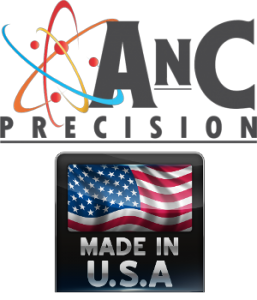Introduction Industry Background:
The plastic tube industry has been around for decades and yet it has little or no quality control. Plastic molded tubes made in the billions are used in numerous products. The most notable product is Tooth Paste that you see in every market. These tubes are manufactured often in China or India and follow the traditional path to the end user as described below.
- They are manufactured and shipped with no measurable (destructive) product test. i.e.; they do not know what the tube is capable of, what pressure it can handle, or any other measurable parameters, other than dimensional values.
- They arrive at the manufacturer (i.e., Tooth Paste filling company), are received and there is no validation that yields quantifiable measurable parameters that define how well the tube will seal.
- The tube eventually is placed on a production line and filling and sealing commences. At the end of the production line there are often QC personnel who squeeze the tube trying to test if the tube is properly sealed and will not burst or leak.
What is needed to Standardized the Plastic Tube Industry by incorporating destructive testing?
What is needed is to set up standards using destructive test methods that validates the tubes performance as it goes through each of the manufacturing processes (a, b, c, above). Unfortunately, the industry often uses manual methods of testing the sealing performance of a tube. Some of the popular methods are to have QC personnel at the end of the production line squeezing the tube in a way to evaluate the tubes performance. In some cases semi-automated methods might be incorporated into the process using air cylinders to compress the tube and visually inspecting for leaks or burst. What are required are laboratory grade instruments that use destructive methods and accurately measure the tubes sealing performance. This would include the burst pressure, that is exerted on all three sections of the tube (side seem, end seem, cap area) as well as monitoring pinhole leaks.
It should be noted that if laboratory instrumentation is to be incorporated into the manufacturing process to evaluate the tubes sealing performance it will also require the production filling sealing equipment to follow suite with improvements to measure and evaluate what is required to seal the tube. For example the production equipment needs to show temperature, pressures, times and other important parameters. Some Tube Sealing manufacturers have started to incorporate these newer measuring parameters into their production sealing equipment https://ancprecision.com/our-equipment/ts100/ AnC Precision has come up with a unique method of capturing all of the sealing parameters in a graphical method. They call this method “Fingerprint”, see article on the AnC Precision Website.
Validation and Measuring Equipment:
There are few products which are out in the marketplace that attempt to measure the tubes sealing parameters. Those that are currently in use measure only measure a few of the parameters and often calculate these values as opposed to actually measuring them in real time.
Jacomex: This simple, rather primitive machine made in Europe (not sure it is still produced) has an air cylinder that presses down on the Plastic Tube and calculates the internal pressure using a chart.
Norden Tube Leak Detector:
http://www.nordenmachinery.com/en/home/innovation/Leak_Testing
This is a high speed Tube Leak detector that would be incorporated into a production line. It basically presses (squeezing) on the tube causing increased pressure and then sniff for leaking hydrogen (5% Hydrogen, 95% Nitrogen). This process does nothing for determining true burst data collection. If the tube was evaluated during its manufacturing path (a, b, c, above) the expensive Norden Tube Leak Detector may not be required.
AnC Precision PTS-100 (Presure Test System):
PTS-100 https://ancprecision.com/our-equipment/pts100/
Destructive Tube testing: AnC produces the PTS-100 that is a calibrated laboratory grade instrument, doing destructive measurable testing; recording exactly how much pressure is required for the side seam seal, header seal and/or the end seal to fail. The tube is tested in a chamber and small pinhole leaks can be detected as well.
Software Machine Cycle (User interface):
Data collection is done during each sealing process. All of the process parameters are stored in a data base along with the part number for future use. The instrument is connected to your local Ethernet for data storage and sharing.
1: Burst Threshold Test
A threshold value is set and entered into the HMI. The machine cycle is started and the pressure is increased into the tube until it burst. The Burst value is recorded and the results are compared to the set value and it either passes or Fails based on the set value. Both the burst pressure and Pass/Fail is displayed on the HMI. The Tube lights up Red if Failed and Green is it has passed.
2: Hold Test
A threshold value is set and entered into the HMI. The machine cycle is started and the pressure is increased into the tube until it reaches the set value. It holds this pressure for 5 seconds and looks for leaks or change in pressure.
3: HOLD TEST to BURST TEST – This test is a combination of test 1 (Burst Threshold Test)
and Test 2 (Hold Test).
A threshold value is set and entered into the HMI. The machine cycle is started and the pressure is increased into the tube until it reaches the set value. It holds this pressure for 5 seconds and looks for leaks or change in pressure. After a short 5 second delay the tube is pressurized until it burst. All of the values are recorded.
In summary, burst testing with a lab instrument gives quantifiable data that helps the packager identify quality and ensures that the sealing process is correctly performed. It is an invaluable tool that directly measures performance and can help in setup as well as production.




